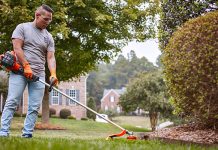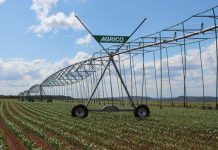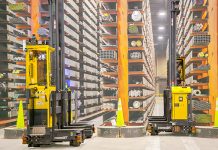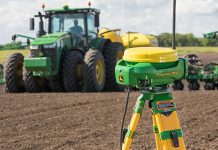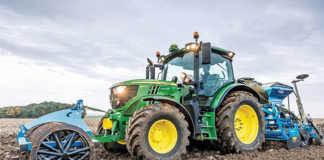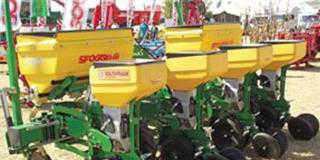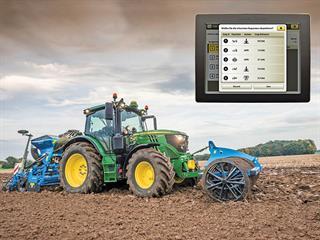
The Deutsche Landwirtschafts-Gesellschaft (German Agricultural Society) conferred silver medals on 44 of the 311 innovations registered at this year’s Agritechnica Show. Here are a few of the ideas and inventions that could have particular relevance to the SA market.
John Deere iTEC AutoLearn
Programming headland turn sequences into a tractor requires navigation of a software menu. This is often a challenge for uninitiated operators, hence JD’s iTech AutoLearn system. After it detects that the last headland sequence was repeated three times, it suggests the sequence be automated. The operator can accept the suggestion by pressing a button. The auto-recorded sequence can be edited at a later time.
Automatic machine setting system
Väderstad has introduced a method of adjusting machine settings in real time according to current soil conditions. The system dispenses with field maps and relies on sensors and a central processing unit that turns the sensor signals into automatic machine settings. Furthermore, the crossboard adjusts automatically so that it always pushes the same amount of soil, optimising the levelling work and fuel consumption.
Lemken automatic seed-type calibration
Today’s seed drills require preliminary adjustments by manual calibration, a system that can lead to errors due to seed loss during calibration, while handling the calibration pan or during manual weighing. Lemken’s automatic seed-type calibration for air seeders adjusts the metering units by calibrating the seed amount and bypass-weighing the seed. All the operator needs do is enter the required seed rate and planting density parameters, the 1 000-kernel weight and the maximum ground speed, and the calibration process can begin. Exposure to seed dressing is kept to a minimum.
Horsch boom control
Traditional ultrasonic sensor-controlled boom control systems often suffer from limited accuracy, especially in patchy crops, tramlines or game- grazed patches. In these situations, the control system adjusts the boom unnecessarily. With the Horsch boom control, laser scanners attached to the cab roof and the side of the machine are used to produce a surface model.
The system then adjusts the boom up front so that it deviates only minimally from the default setting. During operation, the surface model is used to control the height and position of the boom. In this way, it can reliably detect obstacles on the land. The system then selects the optimal response: raising the boom or applying the brake.
Intelligent, sensor-based nozzle control
A joint development by Agrotop, Amazone and Rometron, AmaSpot is an intelligent sensor-nozzle system that reduces the spray rate in crop protection. Detecting green plants against the soil background, the system provides highly localised application, saving up to 80% on the chemical.
Zürn i-Flow
In the i-Flow fully electric control grain header, the elevator driveshaft drives a 60V alternator package that powers the electric motors which in turn drive the revolving assemblies. The speeds of the assemblies can be adjusted individually to conditions, such as reducing belt or auger speeds in low-yielding crops or patches. The electric header also offers intelligent overload protection and optimal crop flow whilst interacting with the combine and reducing wear.
Claas Lexion automatic crop flow control
Many hybrid combines are not utilised to their full potential because operators fear blockages and time loss. The Claas automatic crop flow control system allows the combine to be driven to its limits. The system continuously compares
all sensor readings, including crop mat thickness and rotor speed, with the maximum throughput rates and the maximum driveline slippage for the specific assembly. An alarm is triggered as soon as a parameter is slightly exceeded. The crop flow control system responds to the alarm relative to the degree by which the limit value is exceeded by reducing ground speed automatically or stopping the header instantly.
Claas multi-crop cracker
Forage harvesters crack maize kernels with the help of corn crackers to make their high energy and nutrient levels more easily available for cattle and biogas plants. The Klaas MCC MAX is a new conditioning system that comprises conditioning rollers made up of 30 ring sections each. The special arrangement and geometry of these rings de-fibre the material by applying cutting and shearing forces in addition to friction. This leads to a greater treatment intensity, irrespective of the chop length. Dairy producers and biogas operators will benefit from a higher energy yield.
Kuhn SW 4014 AutoLoad
A laser integrated into the mainframe detects the bale as the machine approaches it, scans the bale length and brings the load arms into position. The bale is picked up, wrapped in film and unloaded on the move. This enhances workflow and increases the overall output of the harvest chain.


